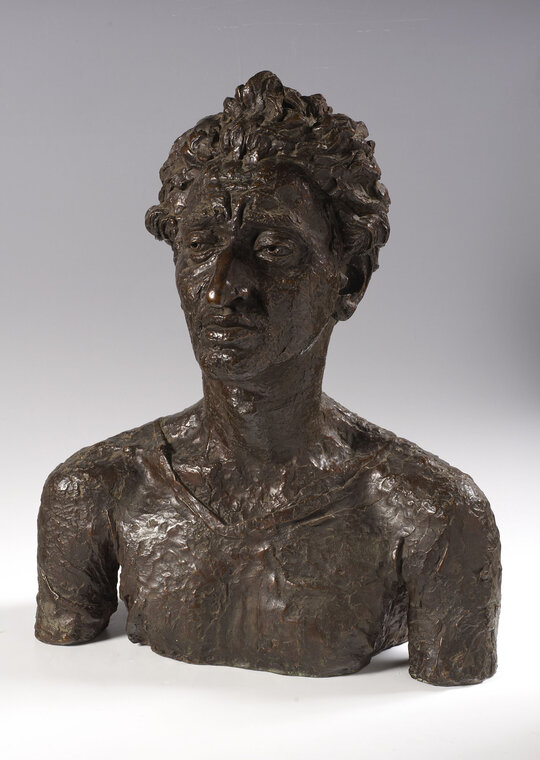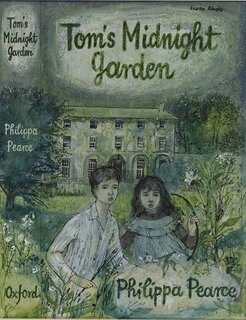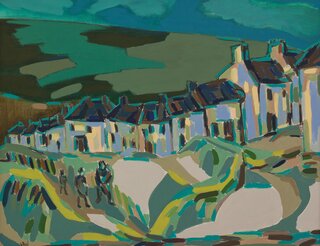
© Jacob Epstein estate
After his arrival in England, Epstein received vital early backing from Jewish patrons, Alfred and Rudolf Kohnstamm, through his friendship with Alfred Wolmark. Between 1912 and 1914 he established important links with other ‘Whitechapel Boys’, particularly David Bomberg and Mark Gertler.
From his first public commission for the British Medical Association’s building in The Strand, Epstein’s career was always mired in controversy, partly because of the uninhibited sexuality of his figures and his lasting interest in the non-Western (and often mixed-race) model. However, his portraiture was always highly prized. Epstein’s head of Leeds-born painter Jacob Kramer (there are also casts at the Tate and Leeds City Art Gallery) captures his sitter’s famous nervous energy and restlessness. Epstein wrote to Kramer to encourage him to come to London to sit for the portrait after November 1920. He later recalled that Kramer ‘was a model who seemed to be on fire. He was extraordinarily nervous. Energy seemed to leap into his hair as he sat, and sometimes he would be shaken by queer trembling like ague. I would try to calm him so as to get on with the work’. Epstein scholar Evelyn Silber has cited the work as ‘the portrait of one outstanding Jewish contributor to British modernism by another [which] sees both close to the peak of their creative energies’.




